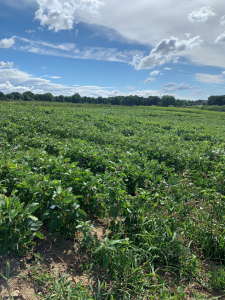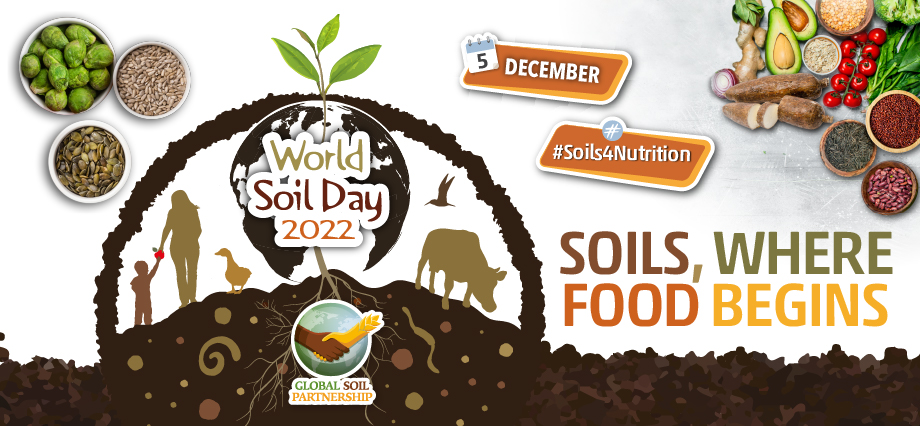Hannah Walling, PhD student, Lancaster Environment Centre
h.j.walling@lancaster.ac.uk Twitter: @HannahWalling98

Soil plays a key role in all food production, with soils providing over 95% of food and mineral nutrition for human life [1]. My PhD research is focused on the role of soils and nutrients in soybean, with a focus on phosphorus (P). Soybean (Glycine max L. (Merr.)) is a globally important crop, with production levels today being 13 times higher than the 1960s [2]. Soybean, or soya as it is more commonly known, acts as the largest source of both vegetable oil and animal feed, as well as being a key component of vegan or vegetarian diets [3]. The demand for soya is continuing to increase, with 5% of the UK population now being vegan or vegetarian [4] contributing to demands of increased soybean production.
There are two basic ways to meet this demand, expanding production area, or improving production levels in current production areas. We are suggesting that the more sustainable option is to do this by improving production levels and closing yield gaps. Closing yield gaps, i.e. growing more crop per unit area, has the potential to meet this demand. We are suggesting that one such way to close these yield gaps is through improved P fertiliser application, however, we are unsure if the benefits outweigh the costs. Hence the question, To P or not To P? Phosphorus fertiliser application has high environmental costs – costs of production and transport, and it’s environmental damage to waterbodies.
Phosphorus not only plays a key role in crop production, but also in human health. Phosphorus is a major component of bones, teeth, DNA and RNA, as well as being a component of cell membrane structure and the body’s key energy source ATP, soybeans and fermented soy provide up to 100% of the recommended daily intake [5]. However, it is not as simple as applying more P fertiliser to soybean cropping systems to provide more soy, there are several pathways and mechanisms that we hope to understand more throughout my PhD.
[1] https://www.fao.org/3/cc0900en/cc0900en.pdf
[2] https://ourworldindata.org/soy
[3] Balboa et al., 2021. Shifts in Soybean Yield, Nutrient Uptake, and Nutrient Stoichiometry: A Historical Synthesis-Analysis https://doi.org/10.2135/cropsci2017.06.0349
[4] https://www.bda.uk.com/resource/soya-foods.html
Recipe: Tofu and edamame noodles (VE)
Soybean makes up a key component of many foodstuffs common in Asian cuisines, including tofu, soy sauce and edamame beans, and this recipe Tofu and edamame noodles combines all of those – hope you enjoy!
Ingredients
- 4 nests wholewheat noodles
- 3 tbsp dark soy sauce, plus extra to taste
- 3-4cm fresh ginger, grated
- Grated zest and juice 1 lime, plus wedges to serve
- 2 garlic cloves, grated
- Bunch fresh coriander, stalks finely chopped, leaves roughly chopped
- Vegetable oil for frying
- 200g tofu, sliced
- 1 tbsp toasted sesame seeds
- 200g frozen edamame beans
Method
- Bring a large pan of water to the boil and cook the noodles according to the pack instructions. Drain and reserve a cupful of the cooking water. In a small bowl mix the soy sauce, ginger, lime zest and juice, garlic and coriander stalks with 4 tbsp of the noodle cooking water.
- Heat a large non-stick frying a pan or wok with a splash of oil and cook the tofu for 1-2 minutes on each side until golden. Sprinkle with the sesame seeds, turning to coat. Set aside and wipe out the pan.
- Add another splash of oil to the pan along with the frozen edamame beans. Add the soy/ginger/garlic sauce and heat for 1-2 minutes, then add the noodles and toss well to combine. Top with the tofu, sprinkle with coriander leaves and serve with lime wedges and soy sauce.
